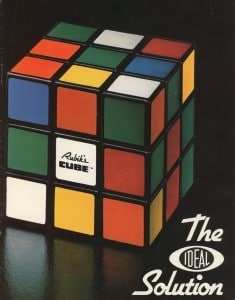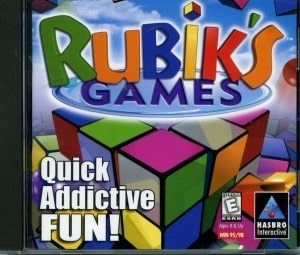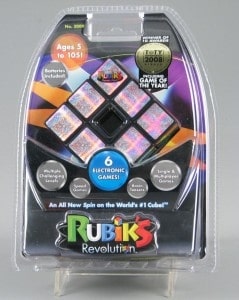“For me, the Cube is a piece of art. It is more than an object with the shapes of a cube made of plastic, more than many colored stickers, more than a puzzle, and it is much more than a gimmick. Like other pieces of art, the Cube is more than itself. Though it may look ever simple at first, it is in fact rather complicated and complex at the same time.” -Ernő Rubik, 2008 
May 19th marked the 40th anniversary of the Rubik’s Cube, a world-renowned puzzle game. Ernő Rubik, a Hungarian sculptor and professor of architecture, invented the Rubik’s Cube in 1974 as a means to represent his desire to merge Grand Art (or traditional fine art with no function) and Applied Art (or art that allowed for everyday use). Rubik called his game Bűvös Kocka, Hungarian for “The Magic Cube.” He developed a physical cube and each side of the cube consisted of 9 brightly colored cubies. The object of the puzzle was to align all the cubies of one side to make a solid color. In 1978 attendees at the Budapest International Fair took notice of the puzzle, and then it came to the attention of the Ideal Toy Corporation, who purchased the rights to the puzzle and began manufacturing and distributing it in 1980—though not before changing its name. Officials at Ideal did not like the “Magic” part of the title, worrying that customers might associate it with evil spirits, and initially considered renaming the puzzle “Gordian Knot,” a metaphor for disentangling an impossible knot. They settled on the Rubik’s Cube, despite the fact that few people at the time knew Ernő Rubik invented the game. Rubik’s Cube gained immediate popularity, and won the 1980 German Game of the Year Award.
Gamers and puzzlers especially enjoyed the challenge of solving Rubik’s Cube. In 1980, students at MIT began a computer bulletin board known as Cube-lovers, where fans could discuss their interest in the game and share tips and tricks for solving it. Cube-lovers eventually closed in 1996, making it one of the longest Internet bulletin boards ever created. In 1981, Ideal organized the first world championship event dedicated to solving the Cube in the shortest time possible. The inaugural winner, 16-year-old Minh Thai, set the first record of 22.95 seconds. The World Cube Association continues to host tournaments. In 2013 Mats Valk of the Netherlands set the current world record of 5.55 seconds. 
Rubik’s Cube also evolved into various forms of electronic game play. In 1982, Atari published Atari Video Cube for the Atari 2600 home console. The game featured a traditional Rubik’s Cube, but instead of twisting the various levels, the player moved from square to square, switching each color. Since then, additional electronic Rubik’s games have appeared on various consoles, including Rubik’s Puzzle World, published for the Nintendo Wii and Nintendo DS in 2008. Game play involves solving the traditional Rubik’s Cube puzzle as well as several other mini-game puzzles. PC gamers might enjoy Rubik’s Games, published by Hasbro Interactive in 1999. It contains 100 challenges across five different puzzle games, including a standard Rubik’s Cube that players can rotate by using a mouse. 
Rubik’s Revolution and Rubik’s Touch, both handheld electronic games, resemble the classic Rubik’s Cube puzzle but provide various twists. Rubik’s Revolution is shaped like a traditional cube, but each square includes an LED light. The cube contains six unique games, all of which require the player to follow the lighted patterns across the cube. Its popularity earned it the Toy of the Year Award in 2008. Rubik’s Touch plays exactly like a traditional cube, but instead of twisting each level, the player simply slides her finger across the sides of the cube to move the colors around. The cube also provides hints to players who become stuck during the game.
The Rubik’s Cube represents just one example of traditional puzzles and games that made the transition to electronic media. While each version is unique, they all provide the enjoyment and satisfaction that comes with solving a difficult puzzle.



